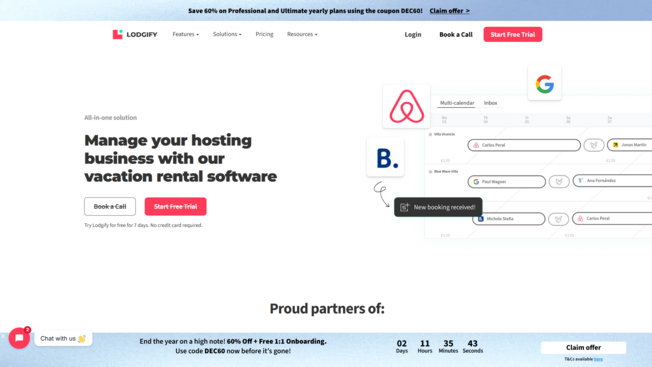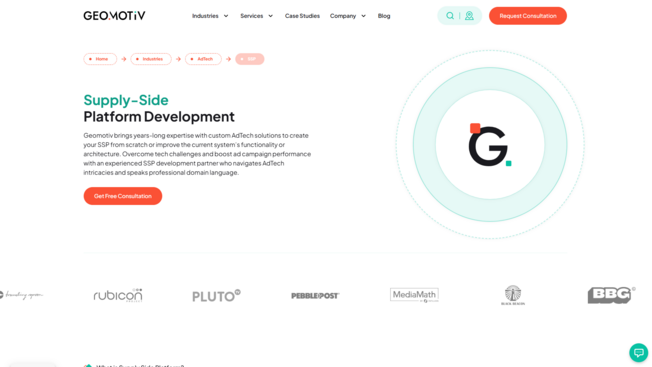
Amancio Ortega Gaona, a Spanish fashion entrepreneur and the co-founder of Industria de Diseño Textil, S.A. (Inditex), which includes prêt-à-porter fashion chains such as Zara, Pull&Bear, Massimo Dutti, Bershka, Stradivarius, Oysho, and Uterqüe. Born into poverty, Ortega Gaona has accumulated enormous wealth, modesty, and openness, remaining his main personality traits. Known for having been publicists’ mystery for decades, Amancio Ortega is a true media nightmare, as neither Spain’s richest man nor any of his relatives have ever given public interviews.
- Early Life
Amancio Ortega Gaona was born on March 28, 1936 (the beginning of the Civil War in Spain) in Busdongo de Arbas, a small village with less than 100 citizens located in the northern Spanish region, León. He was the youngest of four other children. Being extremely poor, the Ortega family soon moved to La Coruña, Galicia, Spain, surviving due to Amancio's father’s job at the local railway station.
They lived in a beggarly house at the railway workers’ quarters. His mother employed as a housemaid, Amancio heard her pleading for credit at local stores, unable to afford essential items, which made him leave school and start working at the age of 14. Amancio Ortega’s first job was as a shop assistant at a local company called Gala, where he learned to make clothes by hand. Frozen in time, Gala, a conventional shirts maker, is still active and open on one of La Coruña’s downtown corners. Selling traditional shirts, caps, and cardigans, José Martínez, who inherited the Gala business from his father, has recently reported that the visitors never buy, they simply ask about his youth friend, Amancio.
In 1963, having gained ten years of managing sewing cooperatives experience, Amancio Ortega Gaona founded his first company, Confecciones GOA, S.A. (his initials if to read backward). The founder of the bathing robes business organized Confecciones GOA into a family company. Amancio was responsible for developing new fashion trends, Antonio (his brother) was heading the commercial issues, Josefa (his sister) was responsible for bookkeeping, and Rosalía Mera Goyenechea (January 28, 1944 – August 15, 2013) was performing as his business partner. In 1966, Amancio Ortega married Rosalía Mera.
- Known to Be An Incognito
The private life of Amancio Ortega is terra incognita. Known to be publicity discreet, Amancio Ortega spends millions of dollars to protect the privacy of his life. That is the reason for no one being aware of Ortega’s first marriage date. However, known to be his first business partner, it was Rosalía Mera, who became Ortega’s first wife. The married couple never appeared together in public, nor did they let their two children, Sandra Ortega Mera and Marcos Ortega Mera, be pictured by intrusive paparazzi. Their clothing business was the only affair they were busy with. Together with Rosalía Mera, Amancio Ortega integrated Confecciones GOA into Inditex, the holding group of a number of popular brands. Founded in 1985 and floated onto the stock exchange in 2001, the Inditex group, a Spanish clothing seller, owns Zara, Pull&Bear, Massimo Dutti, Stradivarius, Oysho, and Bershka brands.
However, in 1986, Amancio Ortega divorced Rosalía Mera. In 2001, he married Flora Pérez Marcotte having a love affair with her since 1983. She is 18 years younger than Amancio. Used to be one of the workers of Ortega’s company, currently, she holds a board position at Inditex. Being in her early 30s, Marta, Ortega’s daughter from Flora Pérez, is considered to be his future successor. Marta is very close to her father; similar to Ortega’s experience, she has undergone her professional training at Inditex, starting from the lowest level of a store employee. Along with the career similarities, Amancio Ortega and Marta share horse riding a hobby, the loving father purchased an equestrian center in Galicia, Spain.
It is a known fact that the overall amount of pictures with Amancio Ortega, who has been avoiding the limelight during his whole life, cannot amount even 200 ones. Zara official news corporation has presented most of them, and the other photographs of Amancio Ortega Gaona, as well as cheeseparing pieces of information, have been developed either by Covadonga O’Shea or by Xabier R. Blanco. The latest being a local Spanish journalist who has been tracking Amancio Ortega’s career; O’Shea is Ortega’s lifelong friend, she runs a fashion school at the University of Navarra. Xabier R. Blanco and Jesús Salgado co-authored the non-official biography of Amancio Ortega Gaona, called Amancio Ortega, de cero a Zara, published on February 17, 2004. However, Covadonga O’Shea has been granted the right to develop Ortega’s official biography. On October 21, 2008, the book was published in the Spanish language under the title Así es Amancio Ortega, el hombre que creó Zara. In March 2012, the book was published in the English language under the title The Man from Zara: The Story of the Genius Behind the Inditex Group.
- Unique Business Model of Zara
Ventured into clothing retail since early juvenility, Amancio Ortega Gaona launched his own company, Confecciones GOA, in 1963. Having formed successful sewing cooperatives with the low-cost local workforce, Ortega was offering fast production clothing turnarounds. Several factories being acquired in Spain, Amancio Ortega opened his first storefront in La Coruña downtown, called Zorba, in 1975. Named after Ortega and his first wife’s favorite movie, the store soon changed the name Zorba into Zara. The reason for that was a complaint from the owner of a bar located nearby and called Zorba.
Amancio Ortega’s business success is tightly connected with a unique business model of the fast-fashion retailer. The two key ideas of this business model are to give customers what they want as quickly as possible. For instance, Zara is known for its 12,000 new designs developed and distributed annually, speed being the retailer’s driving force. Moreover, Zara refreshes its garment stocks twice a week. Amancio Ortega Gaona imposed a golden rule back in the 1970s, which states to receive new orders within a 48-hours’ time period. That is why, Zara factories look like a well-oiled machine, where hundreds of designers and sales analysts co-operate in an open space floor, organized around these two principles, namely the delivery speed and a customer-orientated approach. Designers usually create three models a day, and analysts, together with patternmakers, choose one item from each set. Commercial experts usually possess regional expertise, being from varied backgrounds. These experts apply reports from local managers to compile appropriate to customer habits collections. Each employee of Zara is trained to keep an eye on clients’ styles, requests, and selling trends.
These two basic rules to give customers what they want, and deliver the orders with the motorway speed, have assisted Amancio Ortega in building the fashion empire. The Inditex corporation has become a global fast-fashion retailer with its 137,054 professionals employed in 6,683 stores and facilities, which are currently located in 88 countries, the annual sales revenue being over €18.1 ($19.67) billion as of January 31, 2015. The fast-fashion empire would have been impossible to build unless Ortega has ripped up the traditional haute couture business model to replace it with his own unique one, refined over decades. However, those brutal schedules, the fashion industry has never attempted to keep to, are not always flawless. There arise failures from time to time, being removed from stores as soon as detected. Such an incident happened on Manhattan Avenue, where Zara white jackets were not loyally met by the clientele. As soon as sales staff discovered that the latest preferred cream color, the white ones were withdrawn, and the model reissued in cream tones, which in turn was a success.
To save their customers from identically dressed fashion twins, Zara never reproduces its hits. The brand simply modifies and offers varied versions. Loyal Inditex’ customers also know the best days to purchase items from new collections. For Zara, the day of new clothing deliveries is Sundays and Thursdays, whereas shoes come on Tuesdays and Fridays. At Stradivarius and Massimo Dutti, new garments arrive on Tuesdays and Thursdays. Every Tuesday and Friday works for Bershka and Pull&Bear. Seduced by the state-of-the-art collections, which are meticulously cut and tailored in countries with strong traditions of sewing, famous Zara clients include Queen Letizia of Spain, the Duchess of Cambridge, Michelle Obama, Mary Berry, Olivia Palermo, Alexa Chung, Katie Holmes, Samanta Cameron, January Jones, etc. A famous fashion blogger, Garance Dore, has coined another term – “Zaragasm,” which means being seduced by the variety of choice and fashionable message of Zara offers.
- Investments and Philanthropy
Amancio Ortega’s business portfolio, which has made his net worth, includes not only fashion, but also some additional investments, such as gas, banks, tourism, and worldwide real estate holdings. Financial magazines report the fashion business allowed Ortega to become the owner of real estate holdings in London, Paris, Madrid, and Lisbon, as well as Miami luxury accommodations. Apart from the business activities, Amancio Ortega invests in charity. Together with his first wife, Rosalía Mera, Ortega founded The Paideia Foundation in 1986. This philanthropic foundation assists people with mental and physical disabilities to get interdisciplinary education and training. Amancio Ortega’s ex-wife, Rosalía Mera Goyenechea, used to perform on the position of the president of the foundation. The Paideia Foundation received many awards since the beginning of that charitable project, Amancio Ortega introduced another non-profit organization in 2001. Called Fundacion Amancio Ortega, it is a private NGO aiming to promote science, research, education, social action, culture, and welfare. Recognized with the Order of Civil Merit in 2009, Mr. Ortega is the president of the organization, and Flora Pérez Marcote, his younger daughter, serves as the vice president.
The unique business model of Zara business, with its two golden rules of giving customers what they want as quickly as possible, is not the only one business secret of Amancio Ortega. Being a prime property owner, Amancio Ortega rents them to his Zara stores and correspondingly performs as his fashion business’ landlord. It is not a coincidence that Inditex stores enjoy a loyal land proprietor, who never increases the rental cost. In 2011, bidding with Tishman Speyer, the owner of London’s Tower Place, Rockefeller Center, and the Chrysler Building, for the 43-floor Picasso Tower, Madrid’s famous office building, Amancio Ortega won. His $556-million offer was accepted, and Amancio Ortega Gaona paid all-cash.
The unemployment in Spain being at a critical level even in 2015, the trough of the crisis fell in the year 2007, when all Spanish corporations downtown’s offices in Barcelona, Madrid, and Bilbao, sold their properties and moved out. Inditex has not heard about the crisis, Amancio Ortega taking advantage of the Spanish economic default to acquire locations for deep discounts. The president of the Spanish Association of Fashion Designers, Modesto Lomba, believes Inditex lives in another dimension. Pablo Isla, the CEO of Inditex, annually announces the stable growth of the holding’s revenue.
- Lifestyle
Amancio Ortega’s flexibility of mind has been proven by his pioneering fast fashion clothing business. Ortega’s progressive ideas made it possible to respond to consumer demand quickly, developing ready-to-wear fashion clothing (instead of designing haute couture collections). According to the legend, Amancio Ortega’s habit is to behold young people’s lifestyles to reproduce relevant, innovative designs at Zara.
Amancio Ortega Gaona's life story shows that he achieved his success thanks to his self-confidence, hard work, and, of course, thanks to giving his customers what they want. We hope you have enjoyed exploring Amancio Ortega Gaona's success story of the Inditex Group, and it has inspired you to new discoveries.
Source: Astrum People

















Leave a Reply